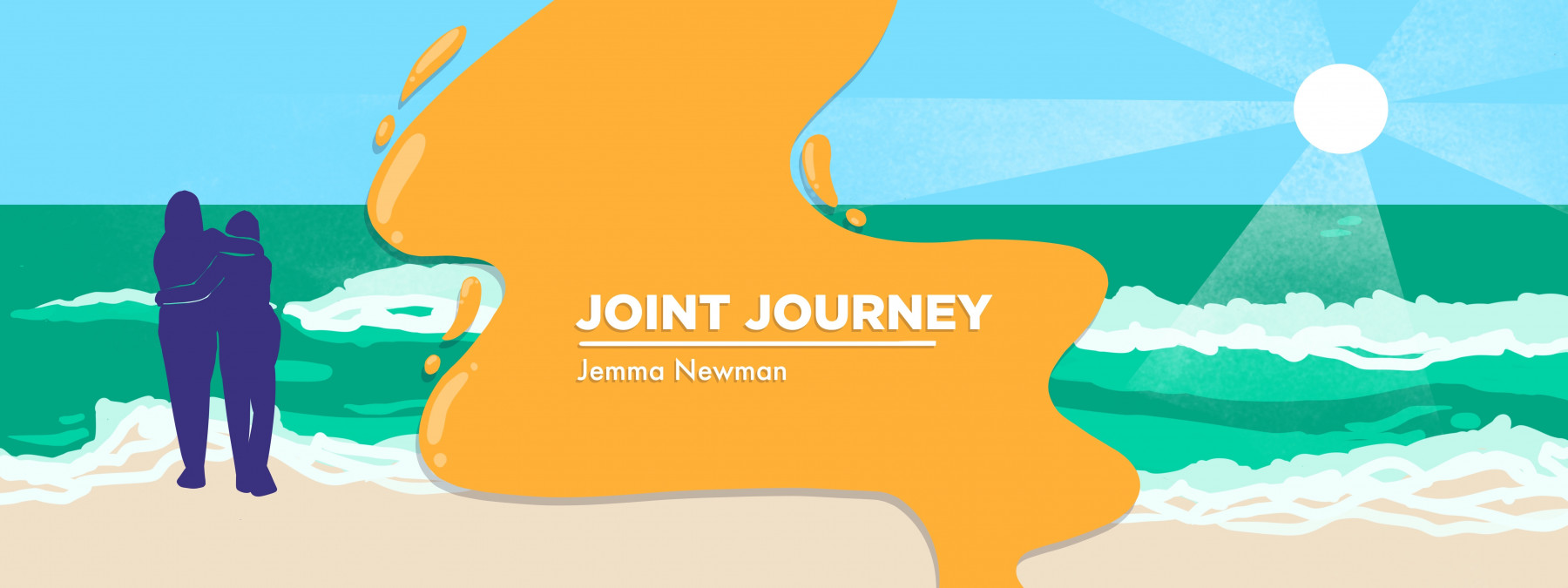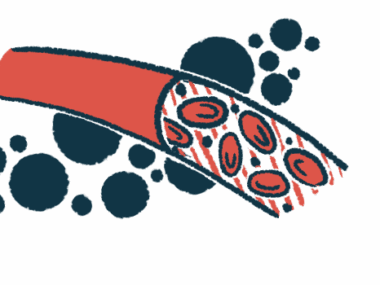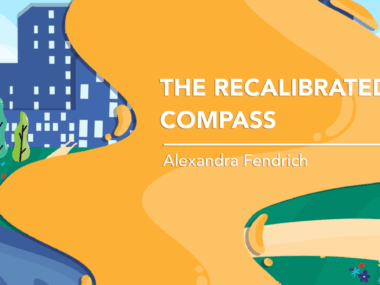What I Learned From a Recent Ankylosing Spondylitis Flare
Ignoring my warning signs helped cause 10 days of agonizing pain
Written by |

A few weeks ago, I experienced what I’d call one of my most painful ankylosing spondylitis (AS) flares. I want to share this experience not to complain, but to talk freely about the difficulties of this chronic disease.
The Spondylitis Association of America article “Examining Flares in Spondyloarthritis” describes a flare as “the acute worsening of symptoms.” While this is accurate for my situation, it in no way explores the raw frustration and desperation of a flare-up.
What caused my flare
OK, I have an admission: I forgot to take my own advice about listening to my body’s signals. Tut, tut, Jemma.
In retrospect, I realize that I allowed a dangerous situation to evolve. Due to sickness, I was barely exercising, so my body was missing that crucial strengthening and balancing movement. In addition, I was getting overwhelmed with back-to-back activities leading up to the holidays. I kept telling myself that if I could “just get these last jobs done, then I can relax.”
A few days after Christmas, our family spent a morning at the beach in our native Australia while our kids, ages 4 and 7, tried out their new bodyboards in the waves. My hips and lower back were grumbling uncomfortably as I slogged around in the deep sand, packing up our beach gear. As I lugged a heavy tote bag up six flights of steep, sandy stairs to the parking lot, I could feel my sacroiliac joints increasing in pain until I could barely take a step. I knew something was wrong.
I believe my flare-up was caused by the extra pressure from a heavy one-handed bag, combined with steep steps, after a period of increased stress and reduced mobility. Eating rich food and drinking alcohol over Christmastime probably didn’t help, either, as I usually eat a very healthy anti-inflammatory diet for AS.
What it felt like
After the beach, my sacroiliac pain progressed from a deep ache to sharp, knifelike jolts. That night in bed, after a few hours of fitful sleep, it worsened until I couldn’t turn over without agonizing pain in my pelvis.
In the morning, I couldn’t sit up. After I managed to carefully roll onto my side and lever myself to a sitting position, I was so stiff and sore that I couldn’t stand. I also couldn’t bend forward to grab a pair of shorts from the drawer.
It seemed ridiculous that I could be in so much pain when nothing extreme had happened. There had been no accident, no specific injury, yet I felt like I’d fallen off the roof onto my lower back and pelvis.
Moving slowly around the house caused stabbing pain in my lower back that sometimes seemed to zap through my buttocks to my hips or down to my knees. Trying to sit at our dining table was impossible, and I simply couldn’t lean forward to eat a meal without nearly crying with pain.
I couldn’t bend to put pants or shoes on. My Wookiee-like legs went unshaven, and the impossibly distant floor stayed covered in crumbs. Every position except standing or lying down was pure pain, and over-the-counter anti-inflammatories like ibuprofen and Voltaren (diclofenac) didn’t make a difference.
As the days of pain ticked past, I was growing increasingly upset at how much the flare was affecting my life. We canceled a visit with friends and a family trip to Penguin Island in Western Australia because I couldn’t fold myself into a car seat. I was exhausted and irritable from the discomfort and lack of sleep. I worried that I’d be stuck at this level of pain, unable to look after my family or enjoy life.
What helped me recover
After a few days of this, I saw a doctor and was prescribed a stronger nonsteroidal anti-inflammatory drug called meloxicam. This medication was effective, although I had to take it regularly because the capsule took about six hours to have a noticeable effect.
Luckily, the flare cleared up after about 10 days. I’m left stiff and achy, but I’m working on that with the gentle stretching and the walking I’m able to do again (thank goodness!). Ice packs were a lifesaver for soothing my sore sacroiliac joints, and hot showers helped to relax my tense back muscles.
This flare-up has made me realize that as much as I want to control my health and stay positive, there will be times with AS when I’m going to struggle. There will be times when I’m going to need the help of others. As proactive as we can be with this chronic disease, managing symptoms with diet and other tools or therapies, sometimes I need to have the strength to be patient and simply survive a difficult time.
Note: Ankylosing Spondylitis News is strictly a news and information website about the disease. It does not provide medical advice, diagnosis, or treatment. This content is not intended to be a substitute for professional medical advice, diagnosis, or treatment. Always seek the advice of your physician or other qualified health provider with any questions you may have regarding a medical condition. Never disregard professional medical advice or delay in seeking it because of something you have read on this website. The opinions expressed in this column are not those of Ankylosing Spondylitis News or its parent company, Bionews, and are intended to spark discussion about issues pertaining to ankylosing spondylitis.







George
Thanks for sharing Jemma. My guess is that more people with AS relate to virtually everything you've written than you realize, and it's important to read it.
Jemma Newman
George, your comment means so much to me! For an invisible disease, AS can have a big impact on our lives, but often others can't see or understand what we're experiencing. I write hoping that in some way my story might help people with AS realize that they're not alone.
George
So true that it's important to realize you are not alone. And this sharing can help tremendously if you tend to blame yourself, as I used to, but not so much anymore. This can be largely a subconscious thing that we are barely aware of compared to its effect. Through all this, I am far more understanding of other people's problems as well.
Eric Bergeson
Dear Jemima,
As it happens, I am going through the very same situation here in Southern New Hampshire, USA. I am almost 81 years old and these flares make me feel my age. My AS began when I was 20 while serving in the military. In 1962, No one looked for AS because they had very likely never heard of it. When I came home in 1964, I continued having attacks in my right hip and sacroiliac that easily knocked me down. Fast forward to the present, I’ve had 3 back surgeries, 1968 1970, and 2004. No one ever mentioned AS. I had never heard of it until my daughter was diagnosed with it.
Since 2009 I have been lucky enough to have lung cancer twice, and am currently in remission from the 2014 stage 4 (praise God). Every 3 months I have a CT and I read in one of the reports that spondylitis was seen on my spine. Lo and behold, they gave me a blood test in 2019 that confirmed my having it. After all these years, I finally had an answer for the pains cause.
AS has forced me to limit my physical activity, and 3 years ago I had a spinal cord nerve stimulator implanted in my back. Does it work for me? Not much! Followed by a pacemaker the same year. 2 years ago, I was diagnosed with heart failure - CHF. Again another reason for reducing physical activity.
Here in New Hampshire it is winter time. Outdoor activities are minimal. However, during the warmer months I ride a recumbent trike. It saves me most of the time. I do have to rest now and then, but my longest ride has been 30 miles. I’m very greatful for that outlet. My trike has battery assist but I like to turn that down so I can use my own leg power as much as possible.
At the present time, I am involved in a pulmonary rehabilitation course and wasn’t able to go this morning because of the extreme pain. I am writin this because I can relate to your issues noted here. I like to tell people that pain doesn’t make an appointment, it just charges right in. Never easy, just have to learn to live with it. BTW, my 54 year old daughter and her 31 year old daughter have AS also.
Thanks very much for your story!
Eric
Jemma Newman
Eric, thank you so much for sharing your story. And what a story it is! Having lived with AS for so long, I'm sure we could all learn a lot from you. I'm (sadly) not surprised to hear that your AS was undiagnosed for all those years, even now it seems that people struggle to get a diagnosis. Quite a few in my family also have AS, including my Uncle and sister - I hope your daughter and granddaughter are getting care and assistance for the disease. Wishing you all the very best for your health, I hope your pain makes a hasty retreat so you can get back to the rehabilitation course!